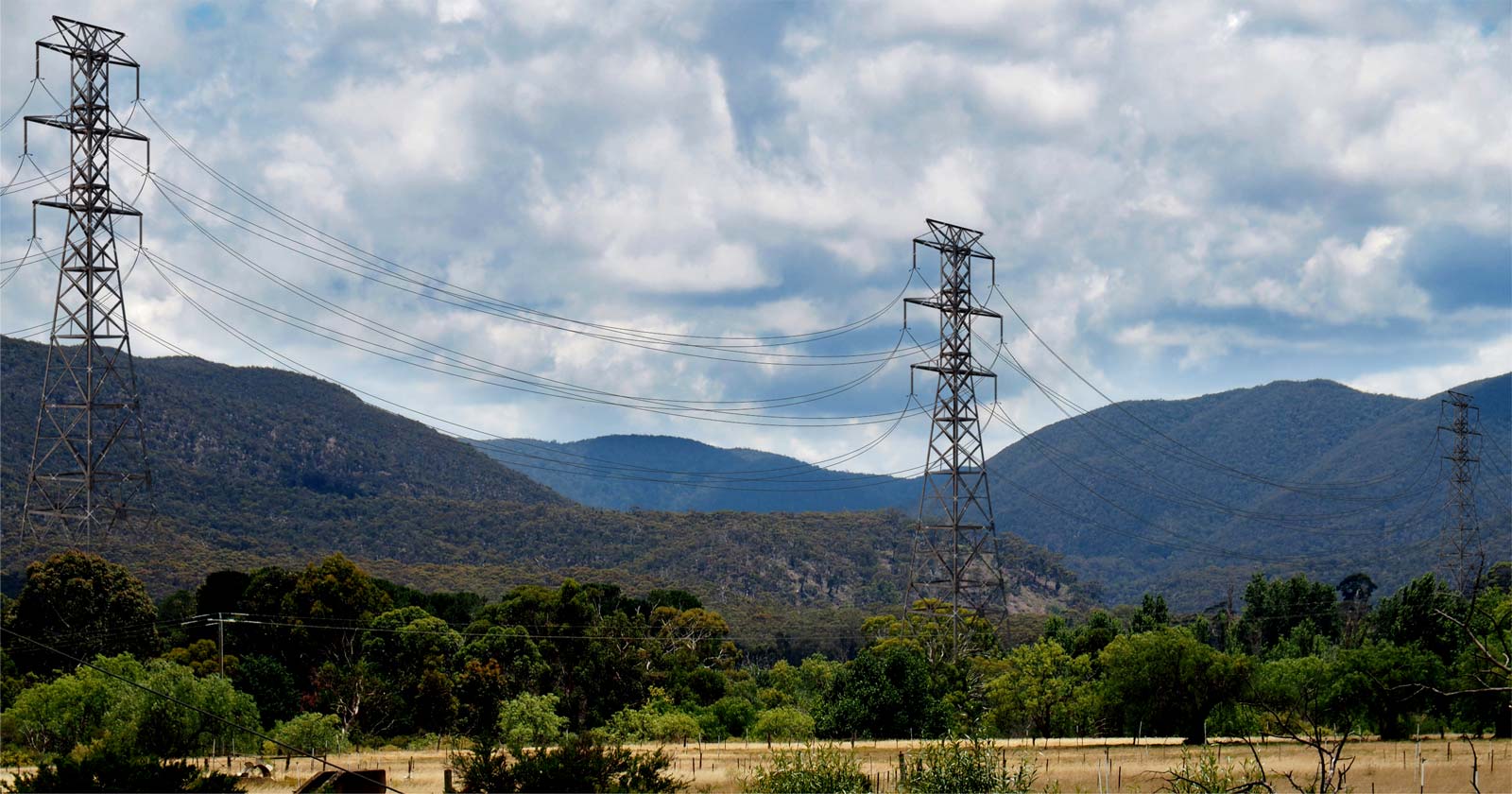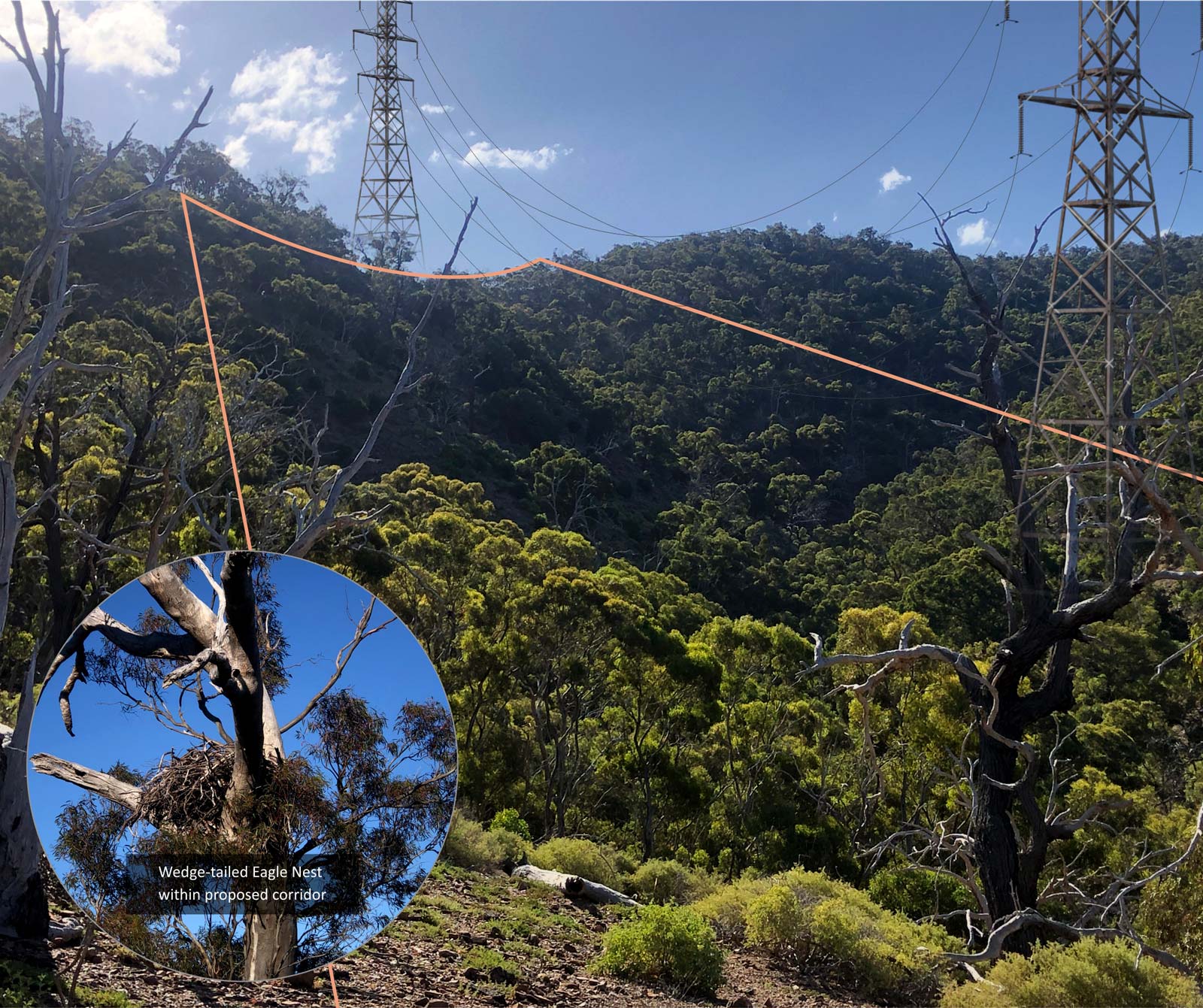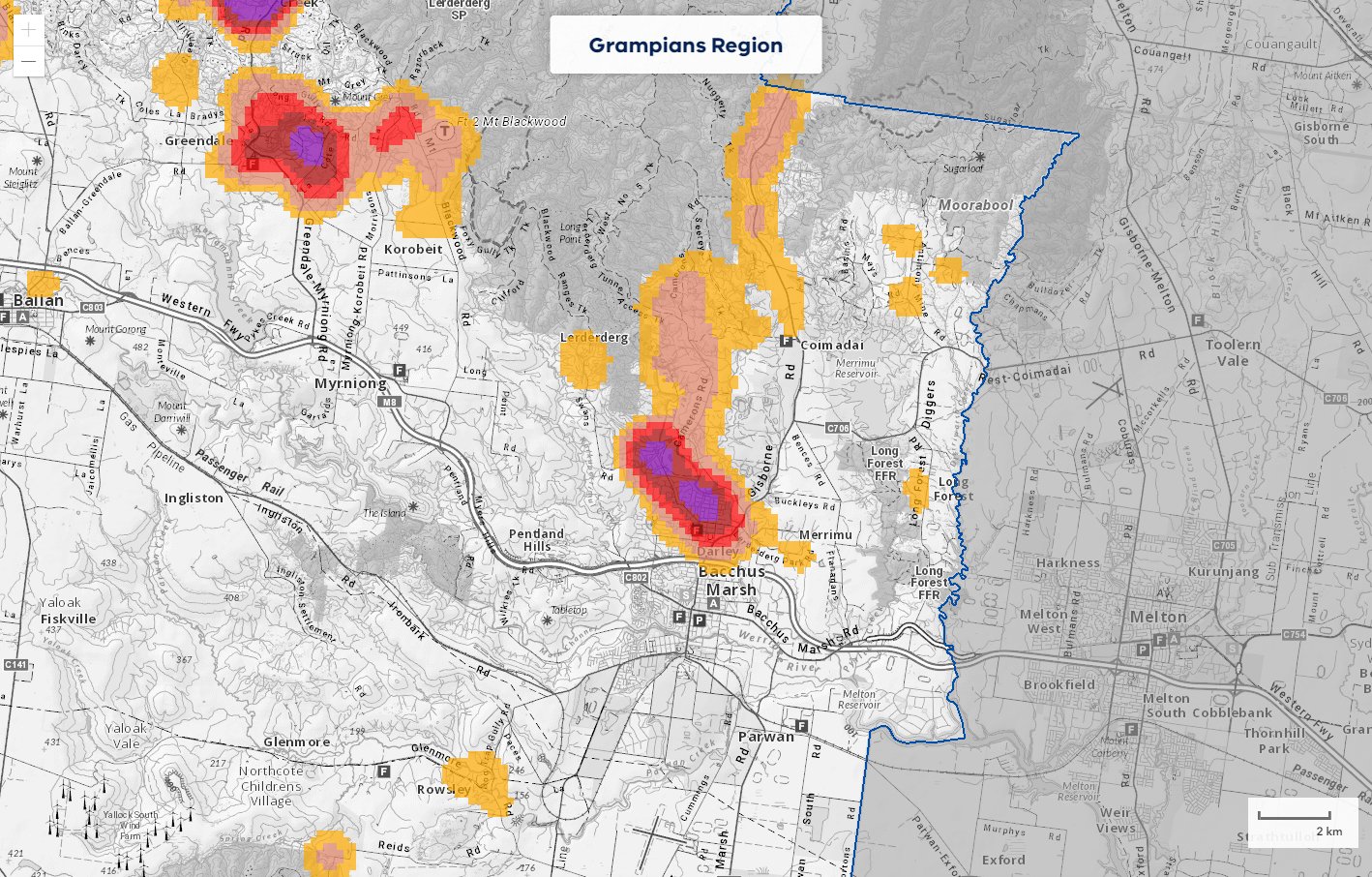AEMO and AusNet Services couldn’t care less about Darley desecration

Tensions are erupting across Victoria’s volcanic plains as a battle to protect state significant landscape and regional communities from a proposed 500kV overhead transmission network heats up.
A local group, Darley Power Fight, is uniting over 2,500 impacted residents in a mammoth battle to change the outcome of a large-scale transmission project before it is allowed to destroy the high scenic value of one of Melbourne’s closest, oldest and most popular riverine gorge landscapes.
AusNet Services has been contracted to construct 190 kilometres of new overhead high voltage transmission lines from Sydenham to Bulgana, a project known as the Western Renewables Link (WRL). Two years ago, AusNet identified a narrow corridor over passing right between the Bacchus Marsh suburb of Darley and the Lerderderg State Park and Gorge, a state significant park known for its remote setting and 300-metre deep riverine gorge.
The landscape is so significant that in June 2021, the Minister for Energy, Environment and Climate Change Lily D’Ambrosio announced the creation of the new Wombat-Lerderderg National Park covering more than 44,000 hectares between Daylesford and Bacchus Marsh. Creation of this new park will protect habitat for rare and threatened species and ensure the region remains a drawcard for recreation and tourism.
“We’re listening to the communities that use and care for these areas and balancing the needs of public land users, industry and the environment,” Minister D’Ambrosio said.
This region within the Moorabool Shire is recognised for its natural beauty and attracts more than 500,000 visitors each year. Many come to immerse themselves in nature, to drink up the jaw-dropping scenery and escape the hustle and bustle. The perfect antidote to our stressful lives.
This narrow corridor, that has been referred to as a pinch point, will be home to 12 kilometres of 80 metre-high dual-circuit steel lattice transmission towers (close to 30 of them) leaving an irreversible and completely unacceptable scar on this rugged, untouched and spectacular landscape. The Wombat-Lerderderg National Park will no longer be the dominant feature of this region which is certain to impact livability, recreation, and tourism appeal.
Rounding the final bend from Melbourne into Bacchus Marsh, you will no longer be greeted by the sweeping panorama of folding dark green hills. This wild and rugged place will take backstage to a silver army of transmission towers and an extensive web of overhead cables.
If the WRL proceeds in its current form, it will irreversibly alter the character of Bacchus Marsh and surrounding areas forever by:
- dominating the landscape, permanently altering its appeal;
- adversely impacting wedge-tailed eagle nesting, territory and habitat with an undetermined mortality rate each year;
- causing damage to critical habitat through weed infestation and spread of disease;
- removing hectares of native vegetation to create an 80-100m wide easement on the boundary of the park
- increasing firefighting risk to the park, transmission infrastructure and thousands of residents in one of the highest risk bushfire prone regions of the state;
- destroying visual amenity for at least 2,500 residents;
- decreasing property values; and
- impacting current and future tourism including the proposed Bald Hill Activation Project.
This ill-conceived, high voltage transmission network will completely desecrate, in a few years, what nature has taken millions to create.
The fact this route is being considered shows that both the Australian Energy Market Operator (AEMO) and AusNet Services, have little regard for society, the environment, significant landscapes, bushfire resilience and the tourism economics of this region.
AEMO’s own 2020 ISP Appendix 8. Resilience and Climate Change policy states, "good engineering design will ensure that any new infrastructure does not lead to unsustainable deterioration in grid resilience. Building additional transmission lines along a bushfire prone transmission corridor would be an example of resilience deterioration".

Artistic impression of transmission infrastructure in the proposed corridor alongside the Lerderderg State Park.
So, why is this corridor even being considered?
Overhead transmission infrastructure, proposed to the north of Darley, is highly inappropriate and represents one of the worst locations in the state for critical infrastructure assets to be routed.
Should the proposed VNI West interconnector and the WRL proceed, they will both share the same super-critical 500 kV lines between North Ballarat and Sydenham. Should these lines be impacted by increasing extreme weather events and the extremely high risk of bushfire, the credible loss of transmission lines will have a notable impact on the state’s electricity supply.
The Darley community has drawn a line in the sand and will not accept an overhead transmission solution. If AEMO and AusNet Services wish to acquire social licence, they will have to meet the community on their terms.
So, what is the solution?
Darley residents, along with all communities impacted by the proposed WRL, are calling to ‘bury the cables underground’. It is technically feasible and despite AusNet’s claims, it doesn’t need to cost the Earth. AusNet have indicated that further technical assessment is currently being undertaken of different designs, including different tower types, structures and construction methodologies, and partial underground construction, are being considered in this section of the proposed route.
However, despite representatives of the Darley community communicating repeatedly with AusNet Services over the past two years, not further information on potential underground routes has been provided. It is highly likely this information will not emerge until the public exhibition phase of the Environmental Effects Statement (EES), and it is highly likely AusNet will make its EES submission based on a full overhead solution.
If solutions are about completing this project on the cheap, then no — underground may not be the best option. As we transition to a cleaner, greener future, we need to consider more than just the energy system. Protecting the environment and considering climate change are two reasons we are transitioning to renewable energy, so, surely the value of the environment and engineering resilience is more critical than the initial project cost.
AusNet acknowledge that the proposed route has not been significantly altered in the Darley area, other than a small shift further to the north. AusNet has stated, "we appreciate that the proposed route for the Western Renewables Link interrupts views towards Lerderderg State Park, and that the potential visual impact is of significant concern." However, “the proposed route has avoided and minimised these impacts as far as practical based on current design.”
True engagement is about transparency and collaboration, not being kept in the dark until is no opportunity remains to improve the planning outcome. Transmission towers have been ruining sunsets for over 100 years and it is ludicrous to consider overhead transmission when the cumulative environmental impacts are so great and environmentally superior alternatives exist.
The Victorian Government is working quickly towards meeting its Renewable Energy Targets to lessen our impact on the planet and its people. In doing so, network planners must make sure the electricity transmission networks being constructed are in sync with our reasons for moving to renewable energy in the first place — conserving and enhancing our environment for the future.
Minister for Planning, Richard Wynne, said:
‘While this project is important to the future of Victoria’s power system, it’s critical we assess its environmental effects to avoid or minimise impacts on the community or the environment.’
AusNet Services stated in the EPBC Act Referral:
‘Through alignment selection and design the Project seeks to avoid areas of significance.’
AEMO stated in the 2020 ISP Appendix 8:
" Building additional transmission lines along a bushfire prone transmission corridor would be an example of resilience deterioration".
A paradigm shift in how and where we generate, store and transport electricity requires a paradigm shift in thinking and best practice planning that considers all things beyond the energy system.
Opposition to poor transmission planning has and will continue to adversely impact the industry, economy, consumers, investors and above all, our legislated climate change objectives.
It is time the energy market operator got serious about transmission planning and stopped viewing the once-in-a-lifetime energy transition through such a narrow lens. The view from the control room needs to change.
Communities will not accept anything less than a best practice approach that seeks to develop the least-regret development path and not simply the least-cost.

Join Now
Get Involved
The only way to make a difference is to get involved. It’s easy to sit back and wait for others to do something but when you are staring at 75-85m towers in a few years time, you will kicking yourself for not doing something when you had the chance. This is OUR only chance to stop these towers, so get involved now.
Welcome to the home of Darley Power Fight. A group of residents in Darley, Coimadai and Merrimu, united against high voltage transmission towers passing through our backyard. We came together through the realisation the transmission line will divide a narrow corridor between Darley and the Lerderderg State Park; altering landscape character, causing widespread damage to critical habitat for threatened species, increasing fire risk to the Park and thousands of residents, destroy our visual amenity, harm local agriculture and will impact businesses and property values. It will completely desecrate, in a few years, what nature has taken millions of years to create.


